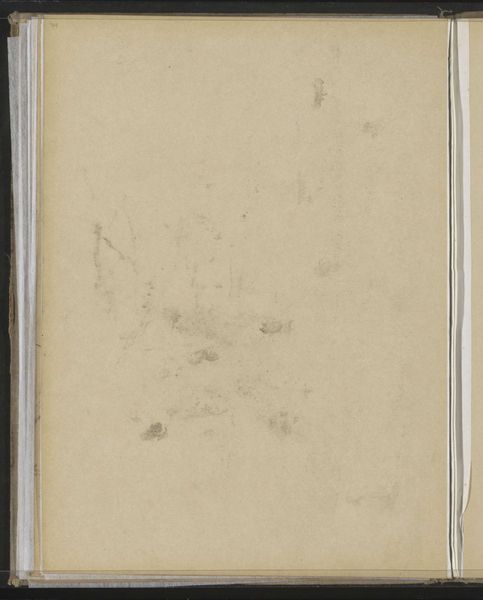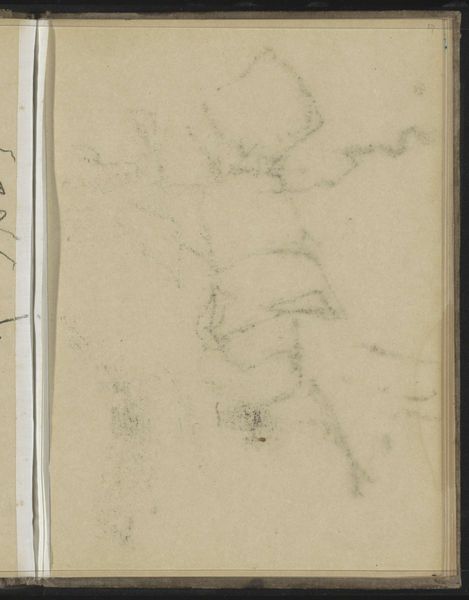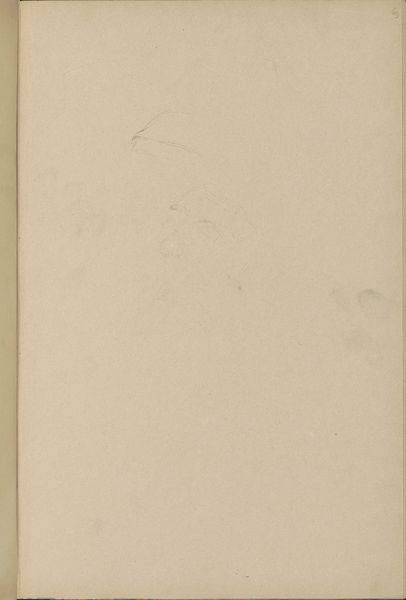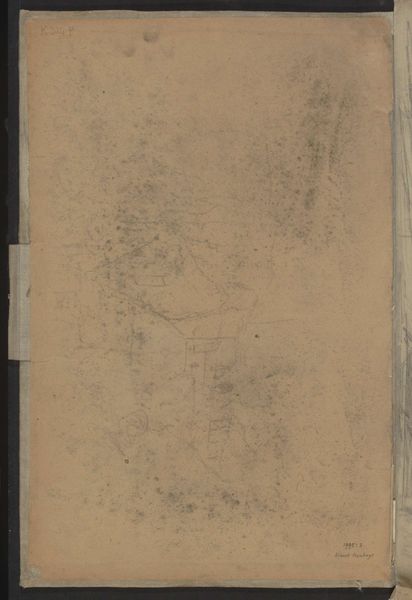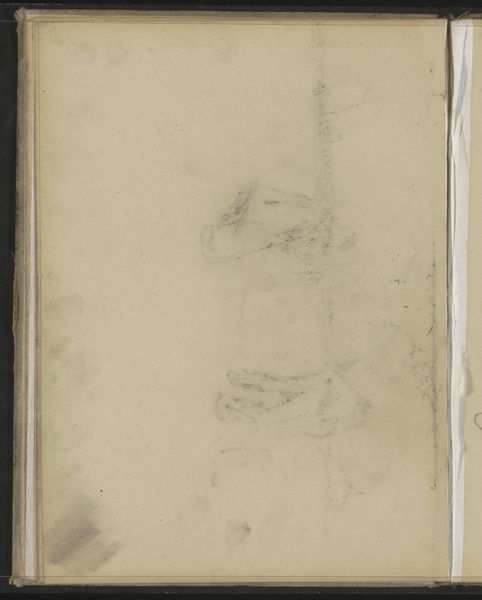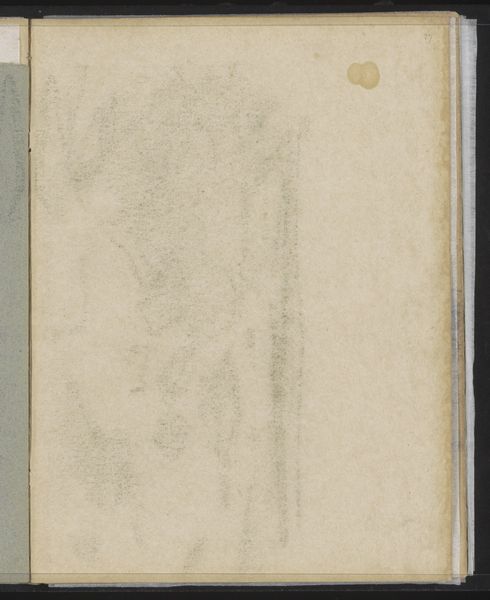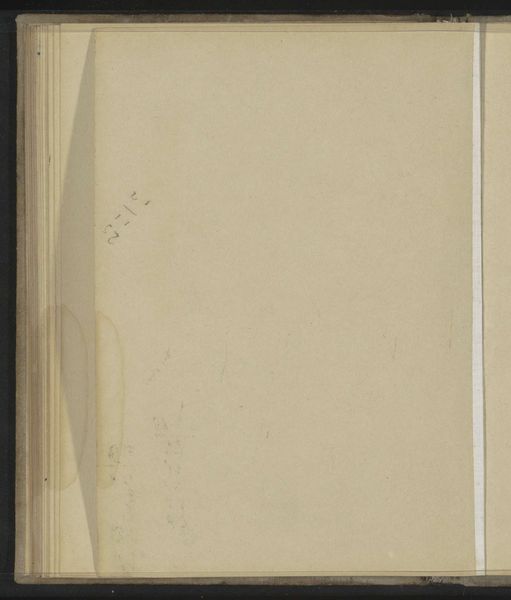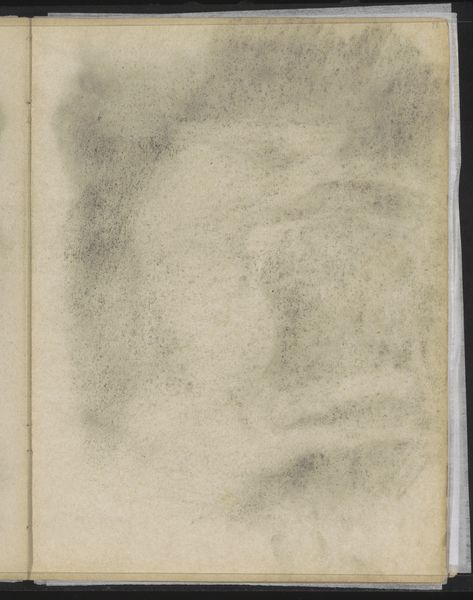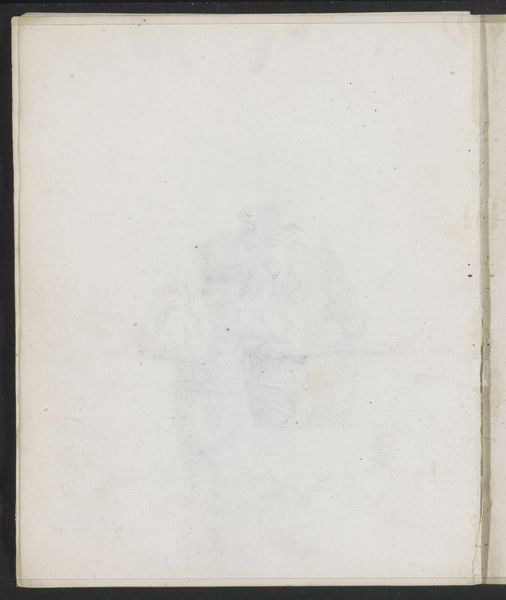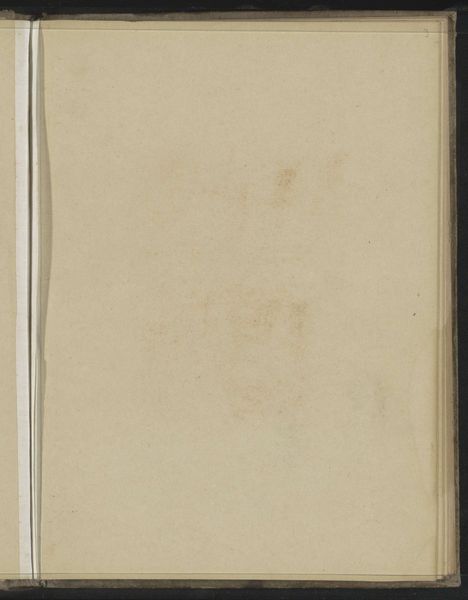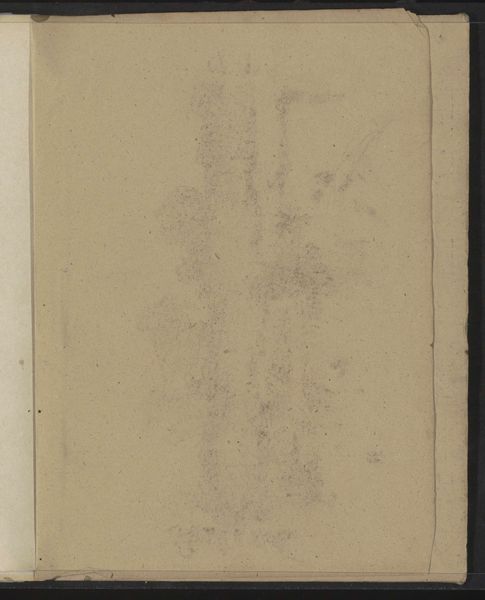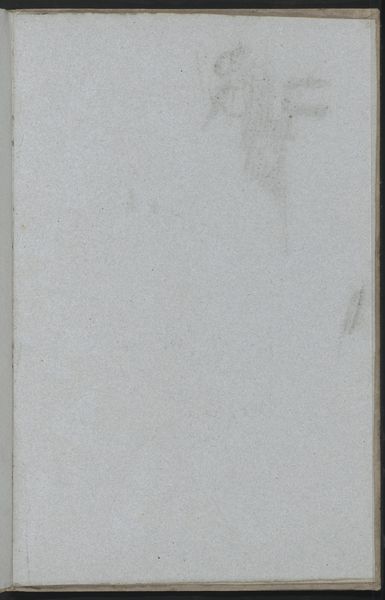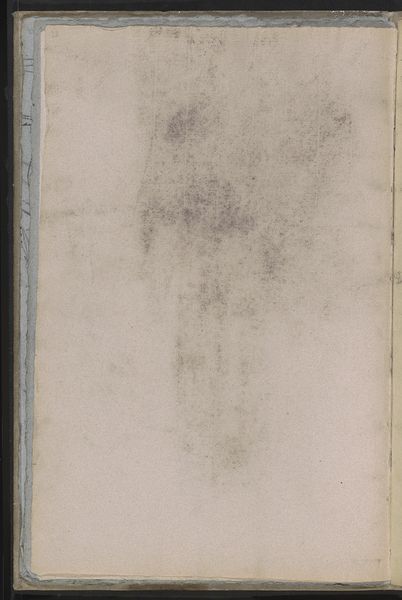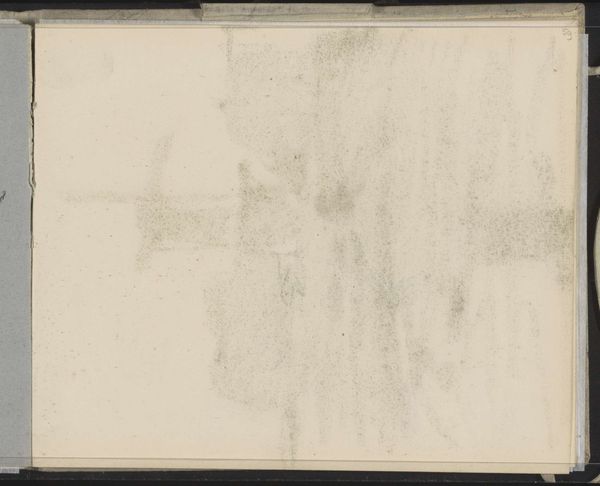
Copyright: Rijks Museum: Open Domain
Curator: This work is entitled "Abklatsch van de krijttekening op pagina 3", or "Counter-proof of the chalk drawing on page 3". Willem Witsen created it between 1893 and 1897, using ink on paper. What do you think when you see this, Editor? Editor: My first thought is how much it embodies quiet observation. The almost ghostly, faded quality makes me feel like I'm looking at a half-remembered dream of a landscape. There's a sense of fragility, wouldn't you say? Curator: Absolutely. There's something ephemeral about it, the way Witsen captured this fleeting moment using a rather unique method. You see, a "counter-proof," involves transferring a drawing onto another surface, so you get this reversed, often fainter impression. It’s almost like chasing a ghost of an image. Editor: That act of replication, though, isn’t purely technical. Thinking about this piece, considering its time and Witsen’s peer group-- the Amsterdam Impressionists-- it reflects the pervasive feeling of capturing the moment as an echo and the challenge of preserving something true to reality. It seems intrinsically linked with ideas of memory, authenticity, and even loss. Curator: Loss indeed. Many found beauty in that wistful sentiment during those years of shifting paradigms. I’d suggest this work almost veers into abstraction too, don't you agree? Editor: Oh, decidedly. By focusing on mood and suggestive forms rather than precise details, Witsen participates in a broader artistic movement that questions the nature of representation itself. This work then ceases to be just a picture; it starts to become a statement, perhaps even a critique. The very act of tracing becomes symbolic. Curator: It’s fascinating how such a subtle, almost hesitant work can spark such wide ranging thought. I think that is what makes this seemingly "simple" study, using minimal material, really rewarding to look at, and muse about, even today. Editor: For me, it invites reflection on how we interpret and record both our surroundings and histories, with a critical eye on perspective and the layers that exist beneath the surface.
Comments
No comments
Be the first to comment and join the conversation on the ultimate creative platform.
